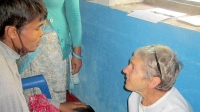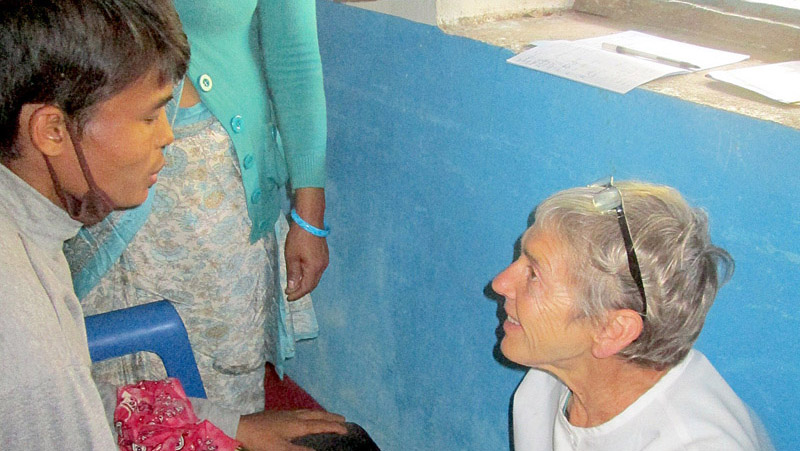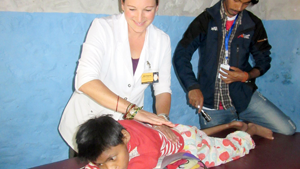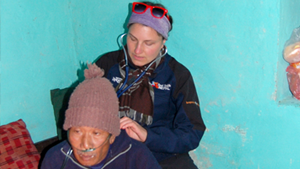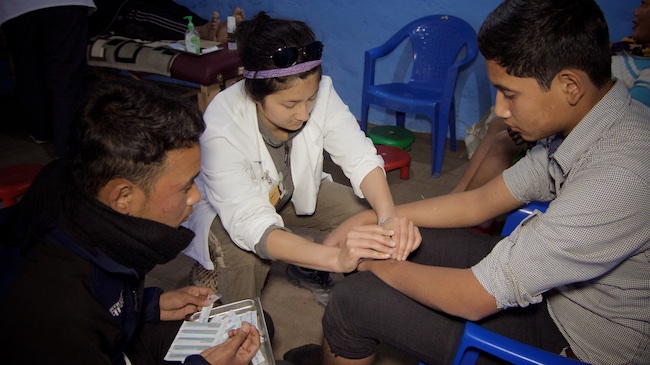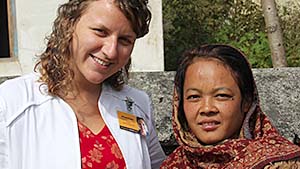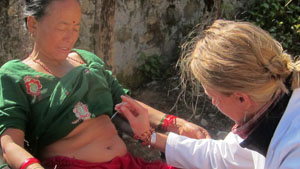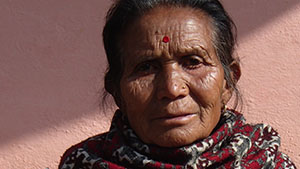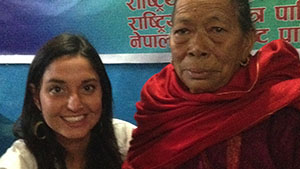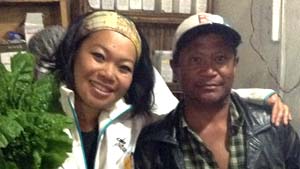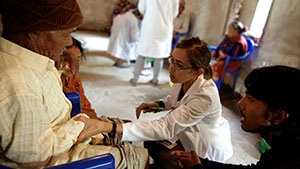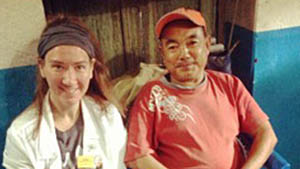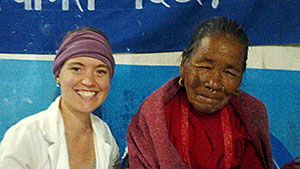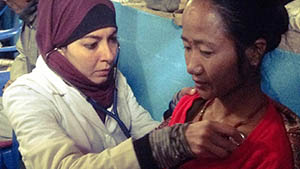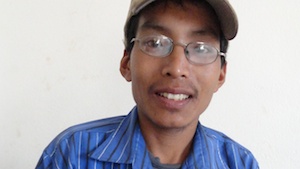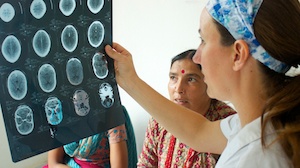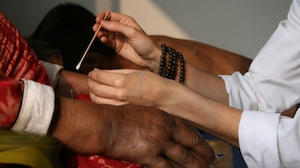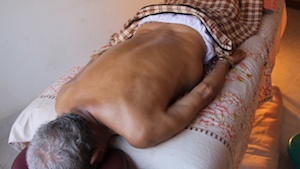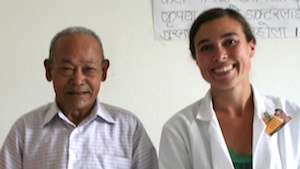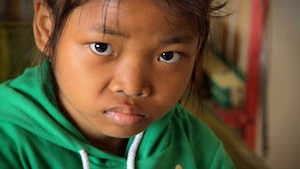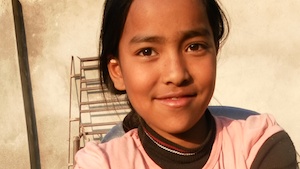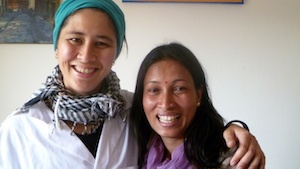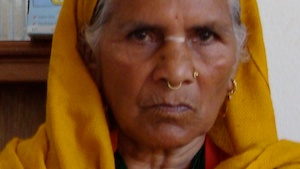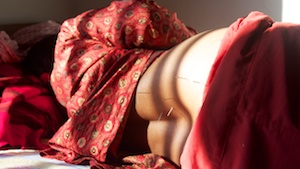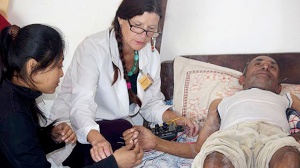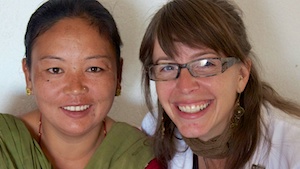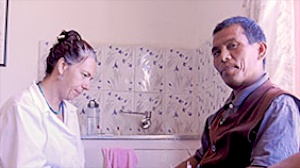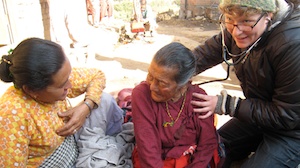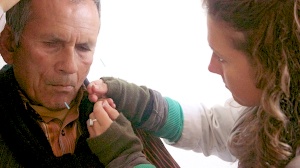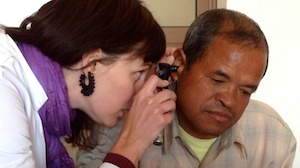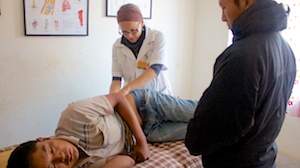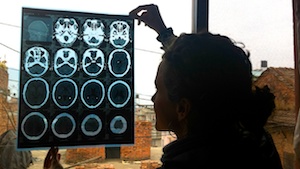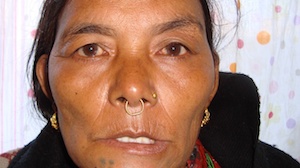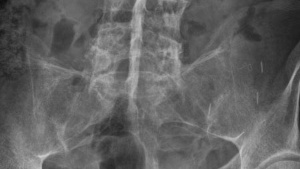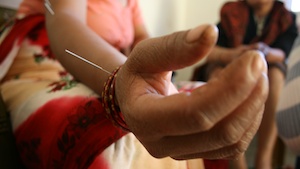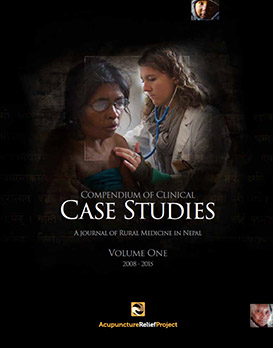Jasmin A Jones MAcOM LAc LMT
February 2013
OVERVIEW
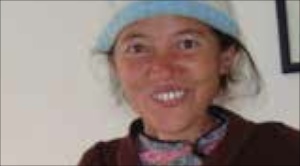
42-year-old female presents with an inability to walk due to slow-onset, partial bilateral leg paralysis occurring over a 15 year time span. After 23 treatments focusing on strengthening the DU and Kidney channels with acupuncture, electro-stimulation and moxibustion, the patient gained a significant degree of improvement in both sensory and motor function in her lower limbs.
Subjective
Patient believes her condition originally started 15 years ago while she was living in the mountains in freezing cold weather for a year and a half. Often, she would become so cold that her limbs would go numb. Symptoms started 12 years ago while she was 5 months pregnant with her second child. She had a difficult time walking up hills and would have to stop regularly because she was experiencing low back pain, and her whole body felt heavy, especially her left leg and arm. After the birth of her son, she considered seeking help for these symptoms because the severity was increasing and slowing her daily chores that she couldn’t stop doing due to her responsibility to her family. Her strength progressively decreased over the next few years until she had to start using a cane to walk due to the weakness in her legs and arms.
Patient reports she had treatment from a Korean medical practitioner, which ended 30 days prior to beginning treatment at the Vajra Varahi Medical Clinic. Treatment consisted of massage with heat daily for 60 days, which according to the patient resulted in a significant recovery of strength in both arms.
She initially sought medical help 9 years ago. A complete x-ray, CT scan and MRI were performed at the Blue Cross in Kathmandu. Patient reports she misplaced the CT scan and is only able to produce her MRI reports, of which the attached paperwork is mostly eaten by rats.
She occasionally experiences cold hands and feet. Her urination and bowels are appropriate and regular. She sleeps easily with mild fatigue in the mornings. She has no headaches, dizziness or ringing in the ears. She has a 30 day menstruation cycle, with mild breast tenderness for 2 days prior, a 4-5 day flow, and dime-sized clots
with no cramping before, during or after the cycle. Her vital signs are normal.
Patient also has a sharp, local pain, bilaterally, at the lumbosacral area, which rates a 7 in accordance with the standard NRS-11, and posterior knee pain, which rates at a 5.
OBJECTIVE
Patient is about 5’5”, 130lbs, with a happy-go-lucky attitude. When she speaks she has a sweet, high-pitched voice, reminiscent of a small child. She is extremely proud, not accepting any assistance in or out of the treatment room. She appears optimistic that acupuncture will help her.
At this time, she cannot stand on her left leg or flex from that hip or knee while walking, as it drags behind her while she walks. She can stand on her right leg, as well as flex the right hip about 5 degrees to take a small step, but has to gain momentum using a twisting, swinging motion and her upper body strength and gravity to kick forward. Her legs tremble slightly while attempting to stand still.
Comparing the left leg to right, patient can feel light touch bilaterally on all dermatomes, with no differentiation between sharp/dull or hot/ cold sensations from L5-S1 dermatomes ,bilaterally, up to patient’s knees.
While lying supine, she cannot actively flex, extend, adduct or abduct the hip, knees or ankles, bilaterally, or flex the abdomen to perform a sit-up. While seated, she can actively flex the knees 15 degrees, as well as extend the knees 45 degrees. Patient cannot wiggle toes bilaterally while seated or lying supine.
Active and passive range-of-movement is normal in the shoulders and elbows. Active wrist flexion is normal, with active wrist extension compromised at 5 degrees. All passive ROM in upper limbs is normal. Active finger movements are inhibited with the left index and middle finger, and right index finger flexion is decreased to 15 degrees.
Patient is also unable to straighten these 3 fingers. Grip strength is decreased by 50% on the left compared to the right.
Patellar reflex: 1+ bilaterally
Achilles reflex: 0 bilaterally
Testing passive proprioception of the big toe shows no differentiation between flexion or extension. Babinski test is unresponsive.
Pulse is thin and deficient on left, disappearing with strong pressure. Stronger on the right with a slightly wiry quality, especially in the middle position.
Tongue is thin, pale, especially in the center with red dots on the tip.
ASSESSMENT
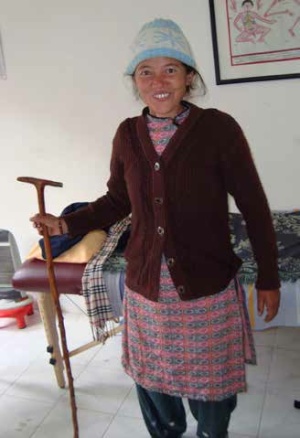 DX: The MRI performed by the Blue Cross of Kathmandu shows no evidence of inflammation or lesions in the brain or spinal cord or evidence of upper motor neuron damage. She was diagnosed with a probable primary demyelinating of L5-S1 nerve root, of which the cause is unknown. According to the Merck Manual, primary demyelinating disorders are suggested by diffuse or multifocal deficits, and demyelination should be considered in any patient with unexplained neurological deficits.
DX: The MRI performed by the Blue Cross of Kathmandu shows no evidence of inflammation or lesions in the brain or spinal cord or evidence of upper motor neuron damage. She was diagnosed with a probable primary demyelinating of L5-S1 nerve root, of which the cause is unknown. According to the Merck Manual, primary demyelinating disorders are suggested by diffuse or multifocal deficits, and demyelination should be considered in any patient with unexplained neurological deficits.
TCM DX: Kidney yang deficiency, cold stagnating the DU channel
PROGNOSIS: Due to the fact that she has been untreated for 12 years, it is unlikely this patient will fully recover from acupuncture alone. Being that this patient reports that she has recovered significant improvement in function of her arms with massage/heat alone 1 month prior to consultation at this clinic, it is hopeful that with acupuncture treatment, this patient will regain some degree of motor function in her lower limbs, as well as a decrease in the sensory deficit associated with her neuropathy. It is also hoped that she will experience some reduction in knee and back pain.
INITIAL PLAN
Patient is to receive acupuncture 3-4 times per week, re-evaluating at treatment 20. Typical points include KD3 with UB58 with moxa to tonify the Kidney and warm the DU channel. UB40 to bring qi and blood to the knees, SI3 with UB62 to open the DU channel. Hua Tou Jia Ji points from L4-S2 to KD 3 with electro-stimulation at 100hz continuous for 20 minutes to stimulate S1 nerve root.
Lower 1/3 of scalp motor points are used in the first few treatments with strong stimulation.
OUTCOME
After 20 treatments, this patient reported being able to stand for a few minutes without a cane or leg trembling. She could also stand for a few seconds on her left leg and a few more seconds on her right leg compared to her initial presentation. Patient’s back pain reduced to a 2 compared to previously being a 7.
She was able to slightly flex her left hip 5 degrees and extend the knee while walking, whereas before she had to swing her leg completely from the right hip to take a step. Her right hip was able to flex 30 degrees to take a larger step. No change in ankle flexion or dorsiflexion. Both knees became free of pain, and active global ROM became normal in the knee while seated.
Sharp/dull tests still showed no change in sensory deficit from the dermatomes L5-S1. However, patient reported being able to feel temperature changes in her first and second toes on the left side, as well as having gained more feeling in general in both legs.
CONCLUSION
Even though it is unlikely that this patient will regain full strength in her legs again, it is recommended she continue acupuncture 2x weekly for at least another 2 months or until patient reaches a plateau. After 20 treatments with acupuncture, she has experienced a 100% reduction in knee pain, 90% reduction in back pain, and regained some ability to feel temperature changes. She has experienced improvement in strength and ROM in both legs. The patient feels lighter in her body. All of these changes add to the quality of her life. As a result of the improvement so far, it is quite possible she will continue to regain further sensory and motor function in both legs.


